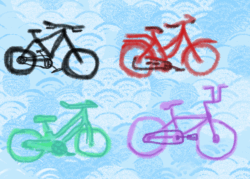It’s hard not to be excited for the Sochi Winter Olympics, now just a few short weeks away. Spectators the world over will be wowed by breath-taking feats of athleticism in ski slalom, snowboard cross, bobsleigh (feel the rhythm, feel the rhyme…), and, of course, this year’s controversial – not to mention verbose – new addition: trying not to be deported by Vladimir Putin because you’re gay.
But there’s one Olympic sport that, for the majority of viewers, elicits derision and disdain instead of awe. It’s the sport (some might say “activity”) everyone loves to hate: curling.
My response is thusly: nuh-uh. Curling is so much more than glorified shuffleboard, or what have you. Instead, to use a borrowed term, it’s “chess on ice.”
And, just to preemptively stem the tide of janitor jokes now, the sweeping aspect is not only incredibly strategic, but it’s hard work. NPR reports that professional sweepers burn 500 calories an hour as they conduct “rock” after “rock” past the “hog line” and towards the “button.”
But let’s get down to it. What it is about curling that makes me, the living and breathing antithesis of a sports fan, so enthusiastic?
Unfortunately, there’s no short answer. I started watching curling during the 2010 Vancouver Games, while I was home sick from school. It was the only thing on at noon. Five minutes into my first “end” (think of a quarter in football, except there are eight or ten of them, because curling is hardcore), I was hooked. Something about the British-inflected commentary, or the frenetic intensity of the sweepers, or the “ooh”-factor that you might more readily associate with tantalizingly-close golf shot, struck me. I couldn’t tear my eyes away from MSNBC the next week. I think that may be the first recorded instance of anyone ever saying that about MSNBC.
In a curling end, two teams take turns sliding eight stones (rocks), each weighing around 45 pounds, across a 150 Ft by 16 Ft textured ice surface. The stones are thrown towards a single “house,” which roughly resembles an archery target. The closer a stone lands to the house’s button (read: bull’s-eye), the more points are awarded.
There’s more to the sport, though. Just as in bocce ball or bowling, stones can be knocked out of the house, or even out of play by the opposing team. To combat this, teams will set up “guards” to protect particularly valuable stones in the house. To circumvent guards, curlers will add spin their stones by twisting the handles (therein lies the origin of the sport’s name).
Juggling all these aspects requires enormous precision on the part the throwers. Sweeping further complicates the process; by smoothing the ice, it allows the stone to travel further, and helps control the trajectory of the curl.
Curling requires not just skill, but strategy. It’s as much a game of minds as it is an athletic contest.
But, let’s face some facts: you and I have scant opportunities to actually partake in the sport (although, the Potomac Curling Club, one of the premier venues in the U.S., is located in nearby Laurel, MD). Curling, however, is almost as much fun to watch as it is to play. At matches themselves, the atmosphere is boisterous – sometimes even debauched. The painted chests and rivalry-fueled ribbing you’d expect at an average NFL game can be found, alongside an atmosphere of respect that would leave most Canadians beaming.
Television viewing has its own charms, namely blithe commonwealth commentary (lots of “oi’s” and “by jove’s”) and a birds-eye view of the curling surface that lets you decipher and deride strategy with unparalleled authority.
Curling tradition dictates that opposing teams drink together after a match in an activity known as “broomstacking.” The losing team is required to buy the first round. Not that I would know, but curling, whether you watch it or play it, pairs well with a frosty brew.
So, when curling once again graces American airwaves during the Sochi Games, I’d recommend knocking back a cold one (interpret that as you will), and boisterously engaging with this fascinating sport. The Canadians are favorites on the men’s side, while the Swedes are looking strong for the women’s competition – but don’t count out the good ol’ U.S. of A, though. If anything, at least tune in for a glimpse at the Norwegian team’s awesome uniforms.





